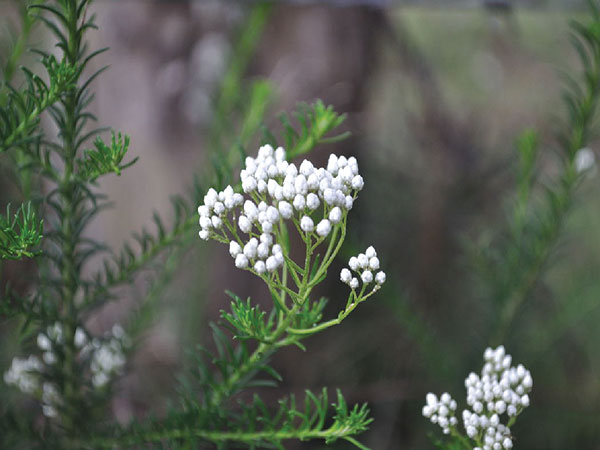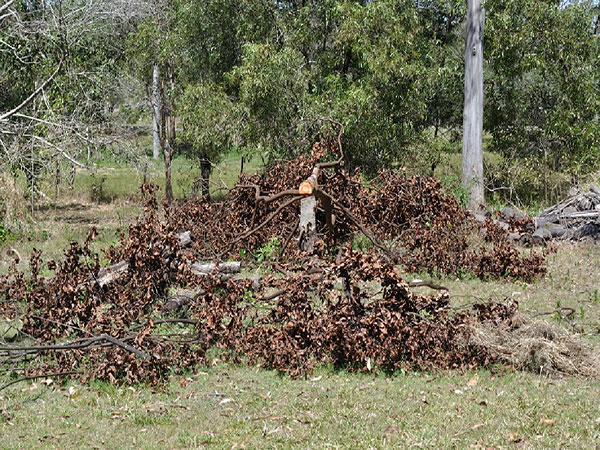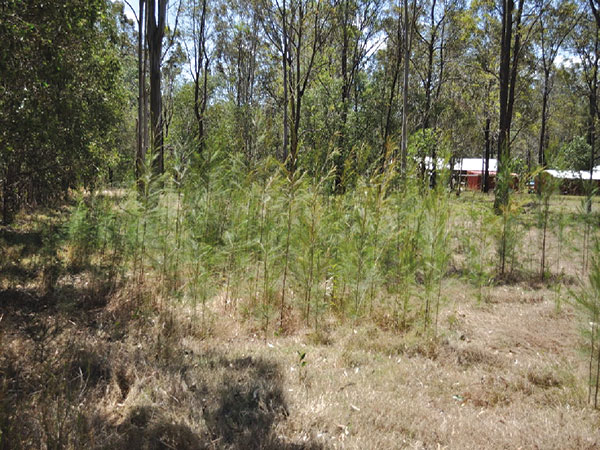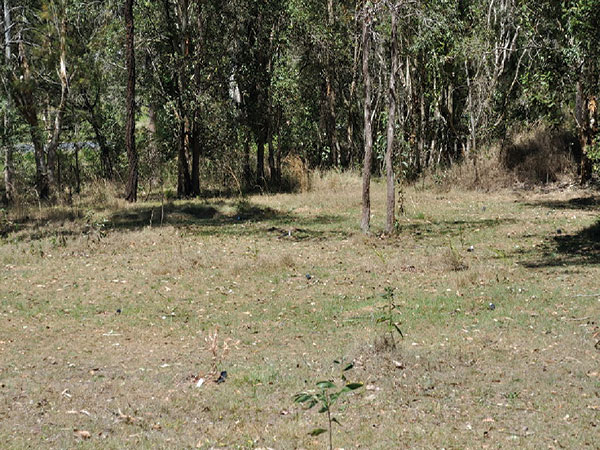(Above:)The beautiful Scarlet Honeyeater
We moved to South Maclean from Sydney approximately 4 years ago for a number of reasons but mainly for our children. This was to get them closer to nature and give them more room to run around in.
One aim for us was to produce food on the property. We considered stock, but when everything was taken into account, including vet bills, food and fences the cost was too high. We decided that the best way to move forward in food production was to concentrate on fruit trees, vegetable gardens and chickens for egg production.

One of the many species of wild flowers, Platysace ericoides.

Two Cadaghi trees have been removed which keeps the native bees happy.
Our other love is Australian native plants. We have created an area at the front of the house consisting of various different plants from around Australia. We also started another area approximately at the middle of the property where we have planted various larger trees including the Queensland Kauri Pine, flame tree, fire wheel tree, bunya pine and others.
We discovered Land for Wildlife through various Logan City Council events and we made the step to have our property assessed. On 1 November 2010 the property was assessed for inclusion in the Land for Wildlife scheme. I was told to get off that mower in the areas where we wanted to revegetate! This was the best advice we could have received.

Casuarina regrowth at the rear of the property has really taken off and is the start of a small ecosystem connecting to Acacia regrowth on the southern boundary. These Casuarina should attract Glossy Black-Cockatoos.

We are re-establishing native vegetation at the front of the property with help from free plants received from Council.
We have found that by leaving the grass to grow it has become effective mulch. In places the grass is approximately 250- 300 mm high. This has become a barrier for evaporation of any moisture which is important with sandy soils that are found on the property. This is displayed in the growth rate of the Casuarinas at the rear of the property. They have grown 300-400 mm in a few months.
We are excited by naturally occurring improvements of the property. These support the regular visits of galahs, rosellas, lorikeets, noisy miners, honeyeaters, wood ducks, black ducks, plovers, brushtail possums, wallabies and Eastern Grey Kangaroos. Other sightings have been Pacific Baza, Wedge-tailed Eagle, Bearded Dragons, goannas, whip snakes, tree snakes, water hens and Glossy Black- Cockatoos. Summer time we have to turn the television up to be able to hear it over the beautiful chorus of hundreds of frogs of various species.
Fireweed is rampant at present, we are controlling this by manual means and believe the war to be won. There is a small patch of mother of millions which should be treated by herbicide which I do not like using but in this case I feel necessary. At the moment there are a number of wild flowers showing their colour too.
Article by Sue and Paul Radke Land for Wildlife members South Maclean, Logan
